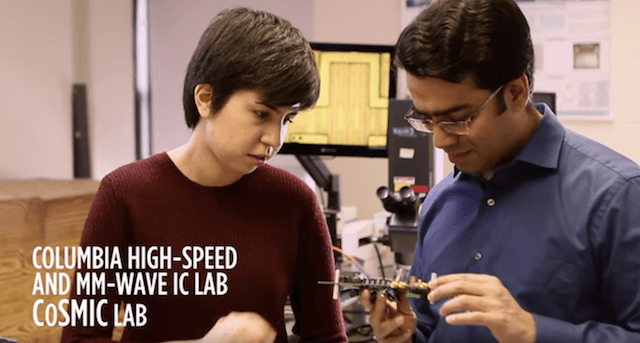Engineers Double Wi-Fi Capacity On Nanoscale Silicon Chip With Single Antenna
Engineers at the Columbia University, New York have achieved a breakthrough in wireless communication that allows doubling of Wi-Fi capacity on nanoscale silicon chip while using a single antenna. Just last year, engineers at Columbia University had succeeded in inventing full-duplex radio integrated circuits that could be implemented on nanoscale CMOS. The system, however, required dual antennas - one acting as a transmitter and the other as receiver. The latest breakthrough reduces the system to just one antenna thus making it smaller.
Prof. Harish Krishnaswamy (dept. of Electrical Engineering), who led the research is excited by the possibility of applications of their research. He believes that it could lead to a revolution in the field of communications. He explained that their circulator is the first one that can be put on a nanoscale silicon chip and offer huge performance gain compared to earlier research. The research team has shown that Wi-Fi capacity can be doubled using a single antenna. This can have a ton of interesting uses in future smartphones and other IoT devices.

The research can also address one of the bigger problems in the field of telecommunication - frequency spectrum crisis. It's becoming clearer that the current generation of networks won't be able to sustain the demands of future. Current generation of wireless networks 4G/LTE supports over 40 frequency bands and there's no room for further expansion. The next generation of the network, 5G will be expected to support 1000x data capacity.
With the transmitter and the receiver re-using the same frequency - the data capacity of the existing networks can be doubled immediately. Krishnaswami's PhD student Jin Zhou explains it in simplest of the words. If humans could speak and listen at the same time - the time for conversations would cut down by 50%. Transmitter eco or self-interference has been one of the most fundamental challenge and the team has found a way to address it.
Read more about the research on the source link below.
Source: #-Link-Snipped-#
Prof. Harish Krishnaswamy (dept. of Electrical Engineering), who led the research is excited by the possibility of applications of their research. He believes that it could lead to a revolution in the field of communications. He explained that their circulator is the first one that can be put on a nanoscale silicon chip and offer huge performance gain compared to earlier research. The research team has shown that Wi-Fi capacity can be doubled using a single antenna. This can have a ton of interesting uses in future smartphones and other IoT devices.

The research can also address one of the bigger problems in the field of telecommunication - frequency spectrum crisis. It's becoming clearer that the current generation of networks won't be able to sustain the demands of future. Current generation of wireless networks 4G/LTE supports over 40 frequency bands and there's no room for further expansion. The next generation of the network, 5G will be expected to support 1000x data capacity.
With the transmitter and the receiver re-using the same frequency - the data capacity of the existing networks can be doubled immediately. Krishnaswami's PhD student Jin Zhou explains it in simplest of the words. If humans could speak and listen at the same time - the time for conversations would cut down by 50%. Transmitter eco or self-interference has been one of the most fundamental challenge and the team has found a way to address it.
Read more about the research on the source link below.
Source: #-Link-Snipped-#
0
